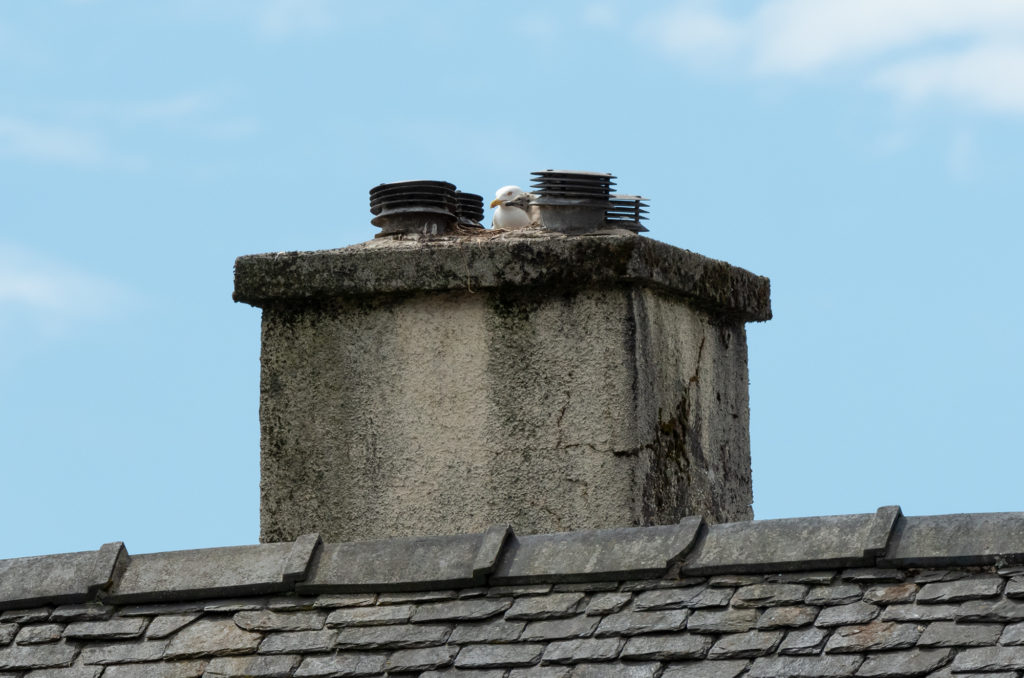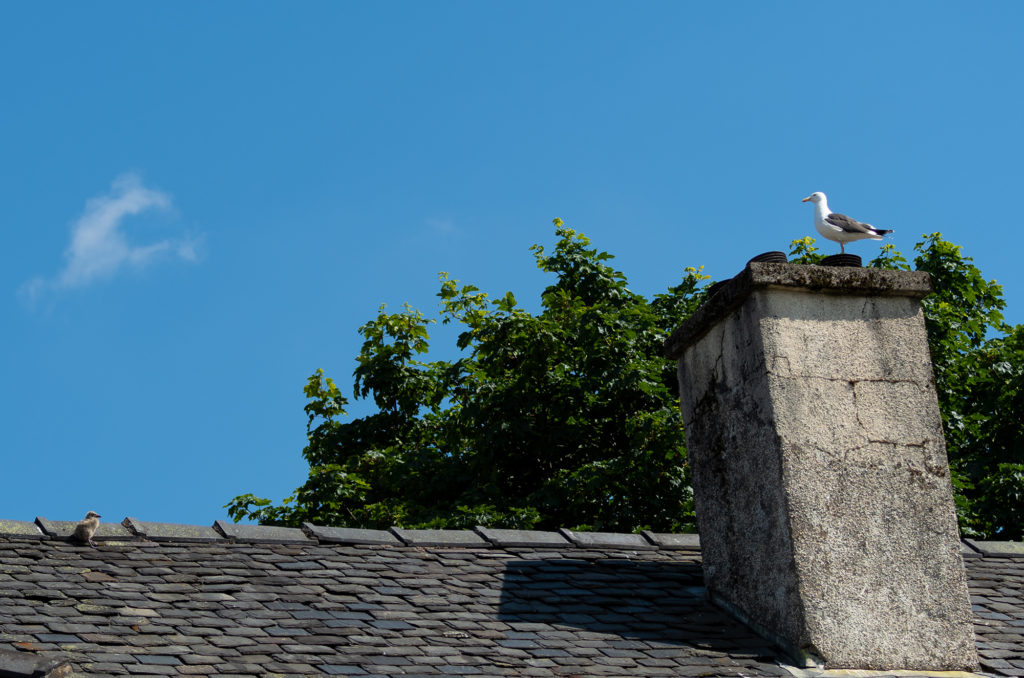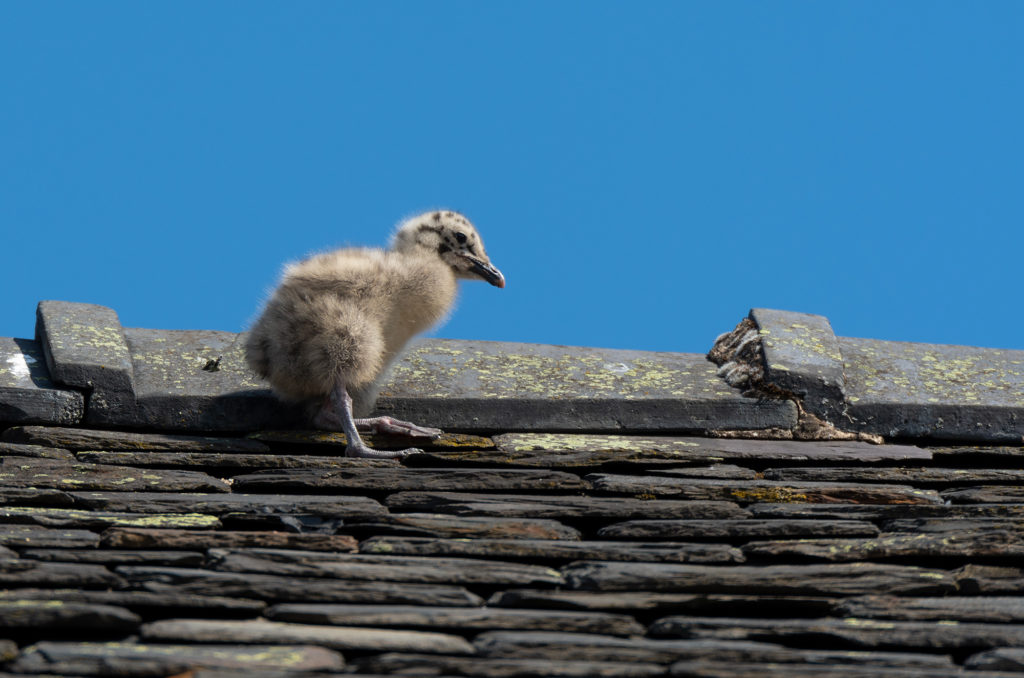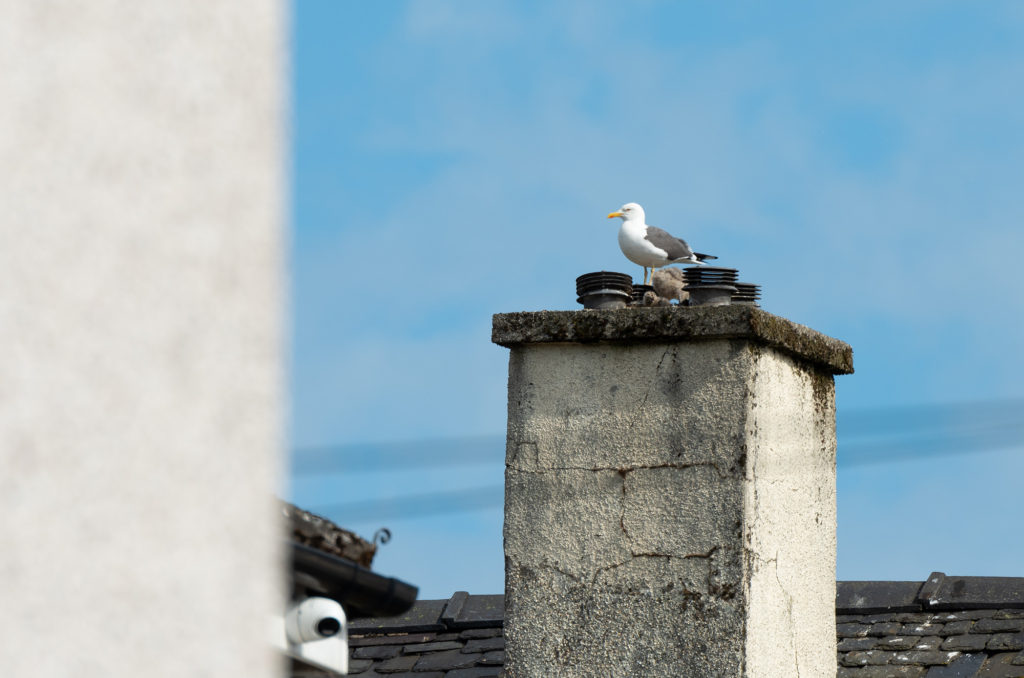These images are from my project on urban gulls – ‘Urban Cliffs’ – and were captured on my local patch in the summer.
I was constantly looking for new views of this lesser black-backed gull family. I had a route of local roads that I walked every day (and sometimes more often than that!) to capture images from various angles.

I like the image above because you can see the parent sitting next to one of the chicks with only their heads framed by the chimney vents, like a window on their world. It is an image that indicates the caring nature of gull parents – an aspect of their lives that not many people seem to consider when vilifying them in the press.

Very small chicks will need their parents to keep them warm, but once they go past three days old, they no longer need to be in the nest, even during inclement weather. The parents will continue to look after them when they go for a wander, like one chick can be seen doing on top of the roof (image above and below).

It is worth reiterating that both lesser black-backed gulls and herring gulls are on the UK Birds of Conservation Concern list, with lesser black-backed gulls amber listed and herring gulls red-listed. The constant bad press these species receive doesn’t help. Despite all British gull species being protected – and it being a criminal offence to kill or injure these species and destroy their eggs or nests – there are still plenty of reports of members of the public harming and killing these birds.
With this ongoing project, I am not only aiming to show an intimate view of the lives of lesser black-backed gulls. I also want to encourage people to see them as the intelligent and beautiful birds they are, rather than a pest species. As always, I will judge my success on whether my images make just one person take the “opposite view” and begin to appreciate these birds.

I have just posted a video that will hopefully win over a few hearts and minds while providing top tips for amateur wildlife photographers about choosing and progressing a local patch project. You may have heard other wildlife photographers explaining the benefits of starting a project. Channelling your energies in this way can indeed develop your skills but can be a daunting prospect for an amateur, especially if you are short on spare time for your photography. SPOILER ALERT: it may be a lot easier than you think!
If you are keen to start a wildlife photography project, my suggestions – based on my own experiences with my local urban gulls – will hopefully give you some ideas. Please let me know what you think in the comments.

